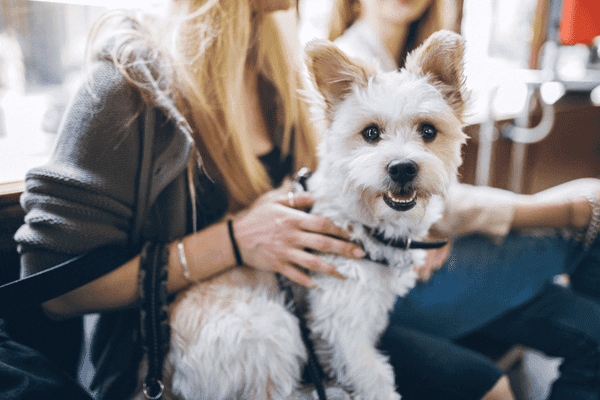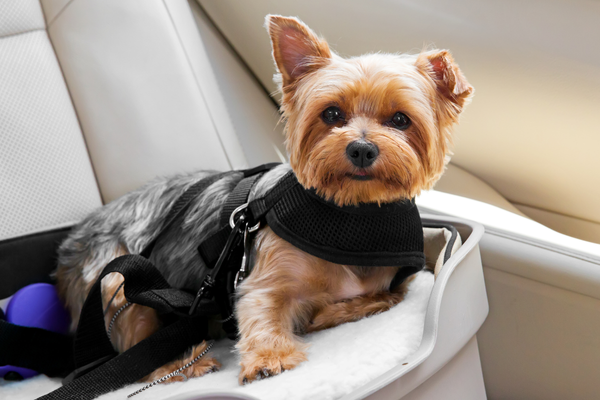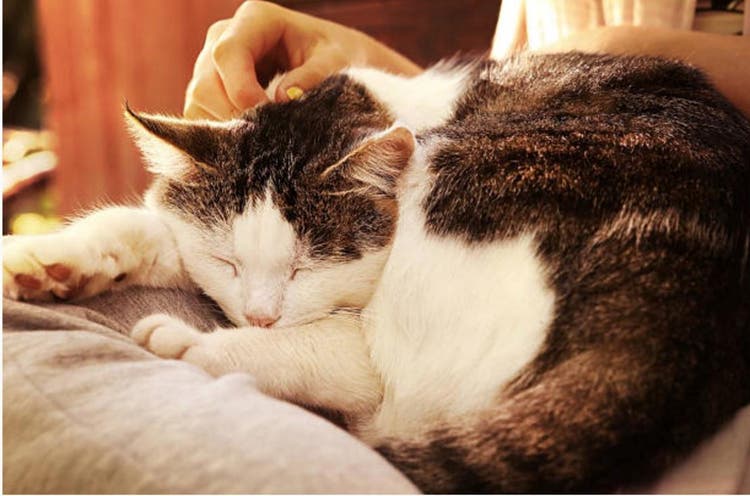Reviewed by: Dr Abbie Lam DVM and Corinna Klupiec BVSc PhD Grad Cert Ed Stud (Higher Ed)
Planning a getaway with your furry best friend? Travelling with your dog can be a wonderful way to make lasting memories. However, ensuring a smooth and enjoyable trip for both of you requires some careful planning. Follow these eight essential trips for your next pet-friendly adventure.
Vet Check and Preventative Care
Just as we pack our own first-aid kits and ensure our health is in check before a trip, it's equally as important to prioritise our canine companions' wellbeing before the journey together.
Before you depart, make sure your dog is up to date on all their vaccinations. These vaccinations protect against common but potentially serious canine diseases and are often required for some accommodations. Ensure your dog is up to date with their intestinal worm, heartworm, flea and tick preventatives. Schedule an appointment with your veterinarian to discuss your travel plans and for advice on the vaccinations and products needed for the region.
Parasites vary regionally, and the types of parasites at your destination may differ from those in your home area. Your vet can assess your travel plans and recommend the most appropriate parasite preventatives for your destination. They might suggest a broad-spectrum preventative like Credelio PlusTM to cover a wide range of parasites, or a long-lasting option like SerestoTM for extended protection throughout your trip.
Ehrlichiosis is a life-threatening bacterial disease, spread through the bite of infected brown dog ticks. It was first detected in a dog in Western Australia (WA) in May 2020, and has rapidly spread to dogs across many parts of northern WA, the Northern Territory, northern South Australia and Queensland. Dogs travelling to any of these areas should be protected with a topically acting preventative product that repels ticks and stops them from biting. The Seresto collar repels ticks and is the only product that provides protection from ehrlichiosis, for 4 months.
Check their Microchip and Identification
A microchip is a tiny device, about the size of a grain of rice, that's implemented under your dog's skin. This permanent form of identification contains a unique identification number that can be read by a scanner at most animal shelters and veterinary clinics. If your dog becomes lost, their microchip will reveal this number, which can then be used to access your contact information. Before you leave on your travels, it's important to double-check that the contact information registered with the microchip is up-to-date so that you can be easily reached when your dog is found.
It's also important that your dog is wearing a collar with a tag. A sturdy collar with an ID tag should display your dog's name, your phone number and any relevant medical details. This allows anyone who finds your dog to contact you directly, without the need for a microchip scanner. However, it's recommended to use both a microchip and a collar, in case the collar falls off.
Pack Smart
You'll need the following pet supplies for your trip:
- Food: ensure you have enough of your dog's food for the trip. Sudden changes in diet can cause stomach upset
- Portable or foldable food and water bowls
- Leads and collars: so your dog can join in on adventures
- A favourite toy or two: a few of your dog's favourite toys will provide them comfort when they're away from home
- Droppings disposal bags
- Bedding: a familiar piece of bedding can help your dog feel more at home
- Parasite protection and any other regular medications your pet takes
- First-aid kit: a pet first aid kit can be invaluable in case of minor injuries. Ensure it includes some diluted antiseptic and clean bandages
Order enough medication ahead of time, and found out the local vet's contact details in the place you're travelling to in case of emergency.

Pick Pet-Friendly Destinations and Activities
Research your destination thoroughly to confirm pet-friendly accommodations, restaurants, beaches, parks and attractions.
If you're on the fence about bringing your dog on holiday, think about your itinerary and the types of activities you plan to do. If your trip is packed with shopping, dining, museums and theme parks, your dog might not benefit from coming with you. However, if your holiday involves plenty of outdoor time on the beach or at the park, your dog will love to join the fun.
Consider the Climate
A new environment can present new health challenges. If you'll be travelling to a different climate than your dog is accustomed to, take precautions to ensure their comfort and safety.
If you're travelling north or heading to a hot, humid area, think about how your dog will cope with the warmer climate. Similarly, your pet may not be used to the cold, so consider how you'll keep your dog warm.
The warmth and humidity of Queensland, Northern Territory, North-West Australia and the east coast of New South Wales also pose a higher parasite risk for dogs. In these areas it's really important to protect against a range of parasites including paralysis ticks, brown dog ticks, heartworm, hookworm, fleas, mosquitoes and sandflies.
To protect your pets and enjoy a parasite-free holiday, we recommend taking the following steps:
- Administer a parasite preventative such as Seresto, which fight fleas, ticks and tick-borne diseases
- Take particular care when bush-walking and visiting the beach with your dog
- Perform daily tick checks (even if you’ve given your dog a tick control product)
- If you do notice a tick, remove it immediately and continue looking for more. Keep the tick for identification and contact the local vet immediately, particularly if your dog is showing signs of tick toxicity like changes to their bark, weakness in the legs, vomiting or excessive panting
Travel Safely
Whether you’re travelling by car or plane, your dog’s safety is a priority. Secure your dog in a carrier or with a pet seatbelt during car travel and don't allow them to sit on your lap. Never leave your dog attended in the car and make sure to stop for regular toilet breaks.
For air travel, check with the airline for specific regulations and make appropriate arrangements for your dog's comfort and safety during the flight. Ensure your dog is comfortable in a carrier and has all the necessary documentation.

Familiarise your Dog with Travel
For many dogs, the car can be an unfamiliar place. If your dog is not used to travelling, short trips before your big holiday can help them adapt to car rides before the longer journey. Start with short trips around the neighbourhood, and make the car a positive place by associating it with treats, toys and praise. Reward calm behaviour to reinforce positive associations.
If your dog experiences carsickness or anxiety, consult your veterinarian for advice on medications or behavioural therapies.
Be Patient and Flexible
Travelling with a dog requires patience and a little flexibility. Unexpected circumstances can happen, such as delays, weather conditions or changes to your dog's needs. Be prepared to adapt your plans as necessary to ensure your dog's comfort and wellbeing.
By staying flexible, you can create a positive and enjoyable experience to make the most of your travels together.
Embrace the opportunity to explore new places with your best friend. By following these tips, you can create lasting memories together. Safe travels!










